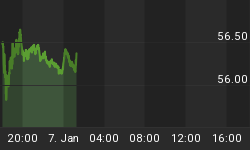
www.CartoonStock.com
December started with a bang. The S&P 500 gapped up +2.16% on the first session of the month, immediately followed by another strong up-day (S&P 500 +1.28%) for the markets, compliant to positive seasonalities like the turn-of-the-month effect (the last 2, but especially the first 3 sessions of a month) and the first week of December (see Seasonalities: The Market's Performance in December), among others.
After Thursday's strong gains it seems less likely that the market will follow historical occurrences, consolidating a huge unfilled gap up (gt. +0.75%) and closing lower 3 sessions later (see Unfilled Gap Up and Consolidating, means a low likelihood that the SPY will close below Wednesday's close on Monday, December 6).
Historically, two strong up days right at the start of a month had significantly positive implications looking at the respective monthly performance.
Table I below shows the date of the last session of the month ('End-of-Month Day'), the S&P 500's historical (since 1930) performance ('Monthly Returns'), the respective number of sessions, the maximum gain and the maximum loss (drawdown) during the month (assumed one went long on the last session of the previous month), and the respective monthly performance for the previous ('Prev. Month') and the then following month ('Next Month') on those occurrences (month) where the S&P 500 closed higher at least +1.0% on a back-to-back session right at the start of a month in the past (means up at least +1.0% on the first and the second session of a month).

(* no close below trigger day's close during period under review)
Table II below shows the respective weekly (for the respective month traded) and monthly key performance figures like the number of weeks / month traded, the percentage of positive weeks / month, the median weekly / monthy return, ... and the maximum gain and loss for the respective weeks / month traded.

It is interesting to note that
- ... the S&P 500 closed out the month with a gain on 23 out of 26 occurrences (or 88.46% of the time), thereof the last 13 ;
- ... the median monthly gain of +5.62% significantly surpassed the S&P 500's at-any-time monthly performance of +0.88% ;
- ... the median weekly gain of +1.17% significantly surpassed the S&P 500's at-any-time weekly performance of +0.28% ; and
- ... the S&P 500 never looked back and did not post a single close below the previous end-of-month close ('max. loss' is positive) on 18 out of 26 occurrences (or 69.23% of the time).
- ... (and it is the first occurrence for a December)
Conclusions:
From a statistical and historical point of view, after posting two strong up-days right at the start of the month probabilities (winning percentage) and odds (expectancy) are heavily tilt in favor of a positive monthly performance in December, and additionally there is a significantly above-average probability that November's end-of-month close (S&P 500 at 1180.55) will not be penetrated during the recent month. Any short-term consolidation of recent gains might provide a buying opportunity targeting higher prices during the remainder and / or at the end of December.
Successful trading,















